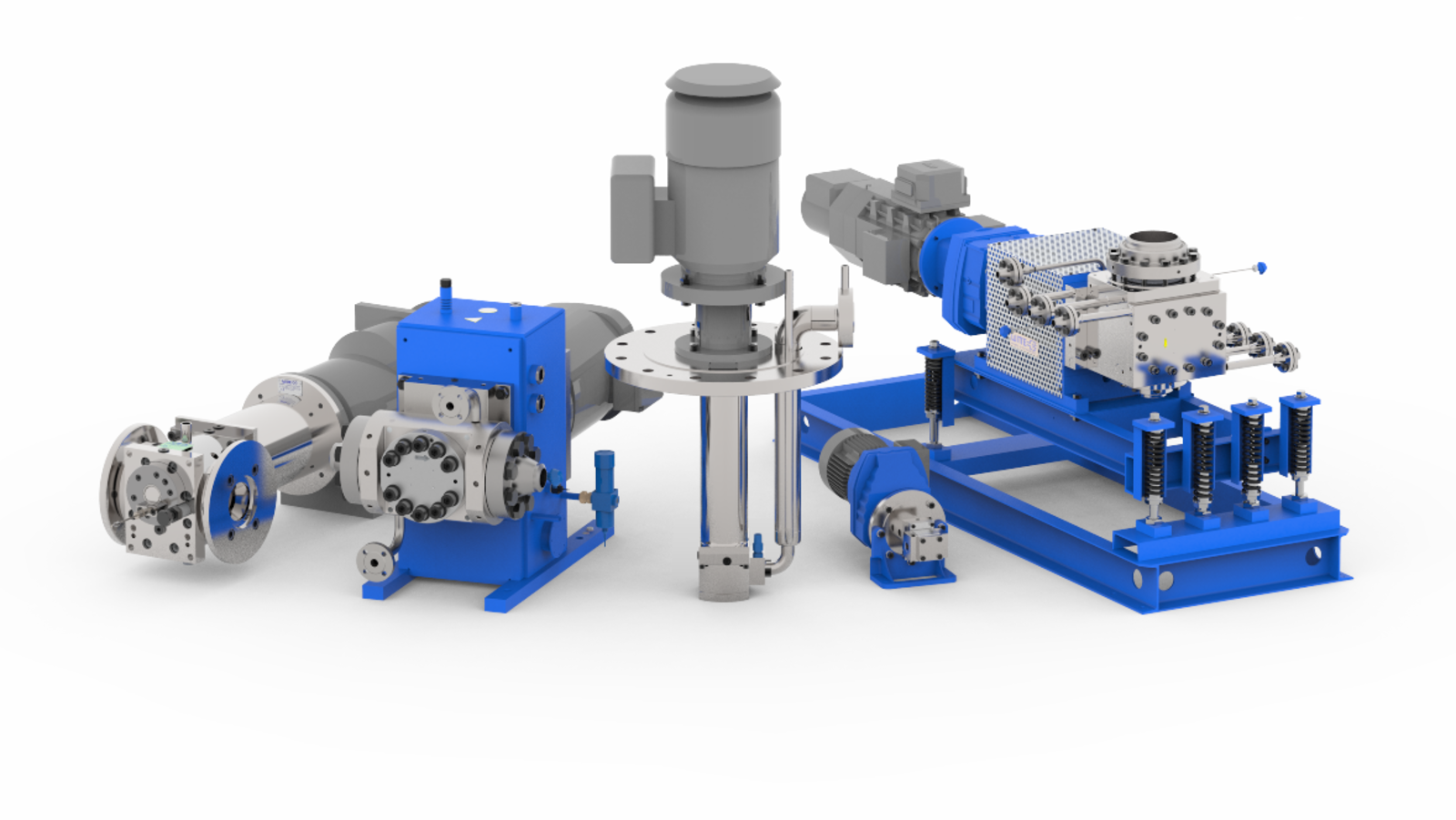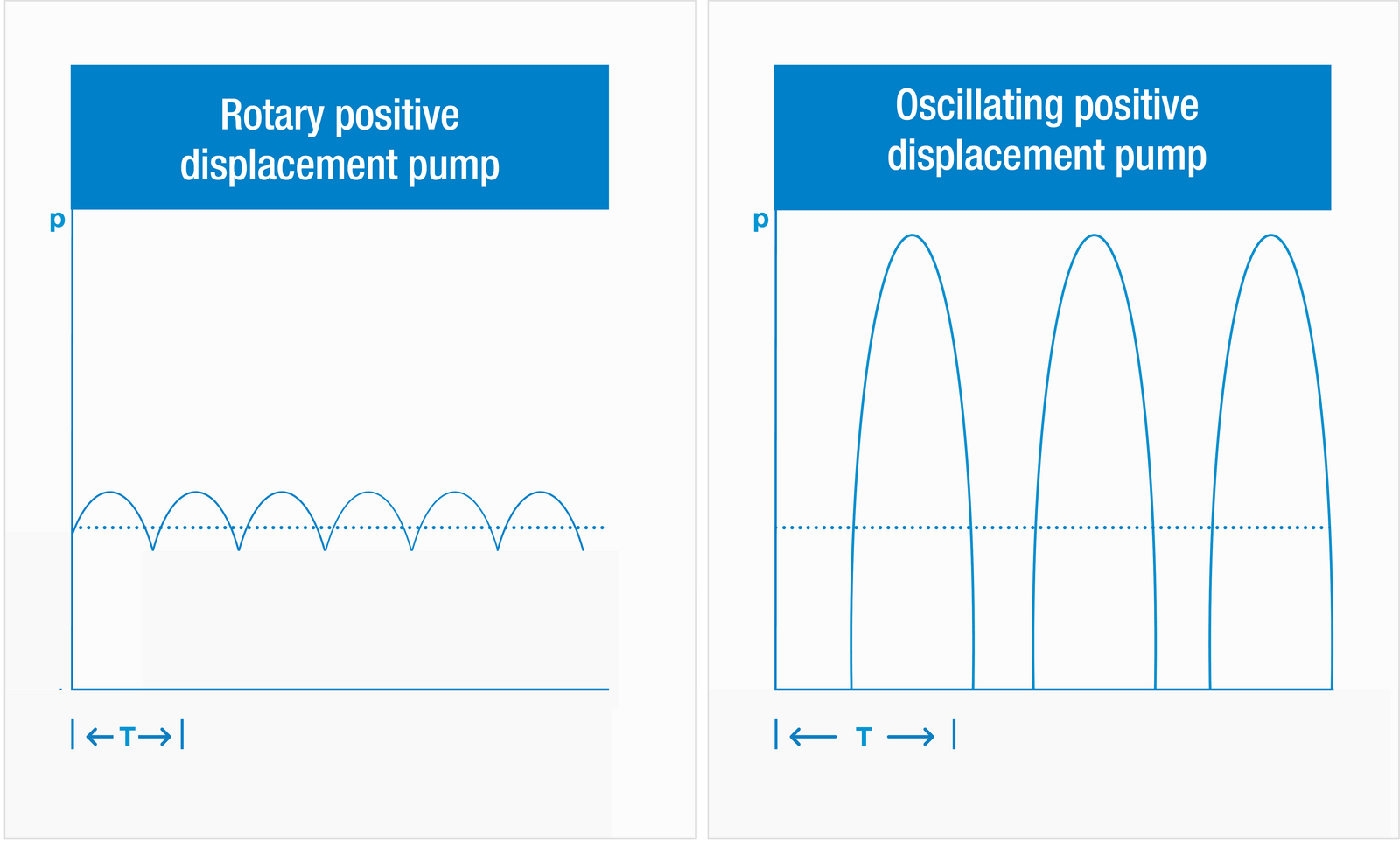
Tips for choosing a gear pump
Gear pumps belong to the group of displacement pumps. In the world of pumps, displacement pumps are a minority with a share of around 33 %, and in this subgroup, gear pumps once again represent a specialised niche. Gear pumps are distinguished between external geared and internal geared pumps. The pumps are differentiated as follows:
- External geared pumps have two equally sized gear wheels.
- Internal geared pumps have an external geared gear wheel that runs in a toothed ring.
The choice depends on the area of application.
Gear pumps are generally used for applications where continuous pumping of media under comparatively high pressure is required. Gear pumps are particularly suitable for highly viscous media, as they can be pumped gently and efficiently.
Differences between external geared and internal geared pumps
External geared and internal geared pumps are often found in industrial applications. There a wide range of applications in which the internal geared pumps do an excellent job. The fields of application of these types of gear pumps differ depending on their design. The limit of use depends in each case on the viscosity and the required pressures at the pump.
External gear pumps
- 4 bearings
- Large feeding range of the gear wheels
- High pressures
- High viscosities
- Both gear wheels have the same number of teeth
Internally geared pumps
- 2 bearings, cantilever
- Medium must pass through the outer toothed ring so that the pumping process can be realised
- Low differential pressures
- Low viscosities
- Lower suction side filling
- Number of teeth of the outer ring is greater than that of the inner gear wheel
Criteria for selecting the right pump technology
The selection of the right pump technology and the right pump size depends significantly on various influencing factors. In order to choose the right technology and determine whether the application can be served by a gear pump, the process parameters are crucial. The more detailed and the more parameters are available, the more precisely the pump can be dimensioned.
The most important factors are the suction pressure at the pump, the flow rate, the viscosity and the temperature of the medium. But the medium itself also has a crucial role to play. If, for example, particles or solids are present, the use of a gear pump can become difficult. The lubricating properties of the fluid are also important. Gear pumps are equipped with product-lubricated friction bearings. This means that there is no external bearing lubrication. In order to prevent the journals from running into the bearing bores, it must therefore be ensured that a sufficiently strong hydrodynamic lubricating film is formed that allows the shafts to float in the bearing.
The individual characteristics of the pump are determined by the following criteria.
- Choosing the right type of pump: Application and suction pressure
- Choosing the correct pump size: Viscosity and flow rate
- Choosing a suitable axial shaft seal: Viscosity, chemical properties of the fluid, suction pressure
- Materials & Clearance: Viscosity, chemical properties of the fluid, differential pressure, temperature
Where are gear pumps used?
The principle of operation of gear pumps
Conveyance principle
In special cases that require a very high torque, both gear wheels can also be driven. This reduces the load on the gear wheels and the wear on the teeth. The pumped medium is drawn into the pump by the shaft rotation. As the gear wheels rotate, a chamber is formed between two teeth and the housing, which is filled with the fluid to be pumped.
As the gear wheels rotate, the fluid is conveyed along the outside of the housing from the suction side to the pressure side. The sucked-in medium in the middle of the pump seals the two sides of the pumps from each other. There, where the two gear wheels coincide again, the pumped medium is squeezed out of the tooth gap. The gear pump is assigned to the category of rotary displacement pump.
Components of a gear pump
Suction side and pressure side
The pump openings are at the two points where the gear wheels touch each other. One opening is on the suction side and the other opening is on the pressure side of the pump. Normally, one gear wheel is driven by the shaft leading out of the pump housing.
Three important facts are gained by the interlocking teeth:
- Transport of the fluid
- Sealing of the suction side and the pressure side of the pump
- Torque transmission
Gear pumps are self-priming for fluids with low viscosities. In the case of viscous media (e.g. polymer melts, hot-melt adhesives, silicones, etc.), filling of the gear pump can be ensured by
- actively "pushing" the melt into the pump (e.g. with an extruder, by static pressure or by a pressurised vessel)
- or by equipping the pump with a large suction funnel.
With the polymer discharge pumps, the effect of the large funnel can be further improved by the additional inlet wedges. In order for gear pumps to be able to prime themselves, the surfaces of the gear wheels and friction bearings must be wetted with fluid. A dry pump is not capable of sucking a fluid from a vessel located below the pump.
WITTE pumps are developed with the utmost care and consist of a coordinated system of various components. This makes the pumps extremely powerful and optimally adapted to pumping different media.

Why a gear pump?
The gear pump belongs to the group of rotary displacement pumps. Compared to the oscillating displacement pumps, the rotating displacement pumps feed with a significantly reduced pulsation in the product flow. Especially in sensitive processes - such as extrusion - this is a great advantage. By using a rotating displacement pump, for example, it is also possible to dispense with the use of pulsation dampeners. This not only makes the process setup smaller, but also more cost-effective. The graph shows the pulsation behaviour of a gear pump compared to a 1-cylinder pump. With additional stages (cylinders) or pulsation dampeners, a similar pulsation behaviour can be achieved with cylinder or piston pumps as with a gear pump. Due to the additional units, the set-up requires significantly more space and is also much more cost-intensive.
Due to its design, however, the gear pump is also subject to limitations in its range of application. For example, multi-stage pump arrangements, with several pumps connected in series, are rather unusual. Fluids containing gas or solids pose a high risk to the pumps. Particles can only be conveyed up to a certain size and up to a certain concentration. Solids in themselves, such as nuts in the food industry or mineral pigments in plastic melts, can lead to severe damage or even total failure of the pump.
Particles can pose a variety of challenges and problems when they get between components that are moving relative to each other.
The critical points in the pump for fluids containing pigments are:
- radial between journal and friction bearing
- axially between the end face of the shaft and the friction bearings
- between tooth head and housing
- on the loaded tooth flanks when the teeth interlock
![[Translate to English:] Icon: Zahnradpumpen für die Kunststoffindustrie [Translate to English:] Zahnradpumpen für die Kunststoffherstellung](https://www.witte-pumps.com/fileadmin/_processed_/1/8/csm_icon_kunstoffherstellung_66c06a780d.png)
![[Translate to English:] Icon: Zahnradpumpen für die Chemieindustrie [Translate to English:] Icon: Zahnradpumpen von WITTE für die Chemieindustrie](https://www.witte-pumps.com/fileadmin/_processed_/1/0/csm_icon_chemie_v3_44d3f3172d.png)
![[Translate to English:] Icon: Zahnradpumpen für die Extrusion [Translate to English:] Icon: Zahnradpumpen von WITTE für die Extrusion](https://www.witte-pumps.com/fileadmin/_processed_/1/f/csm_icon_extrusion_510be3145d.png)
![[Translate to English:] Icon: Zahnradpumpen für die Compoundierung [Translate to English:] Icon: Zahnradpumpen von WITTE für die Compoundierung](https://www.witte-pumps.com/fileadmin/_processed_/0/0/csm_icon_compounding_b6a3ca88a9.png)